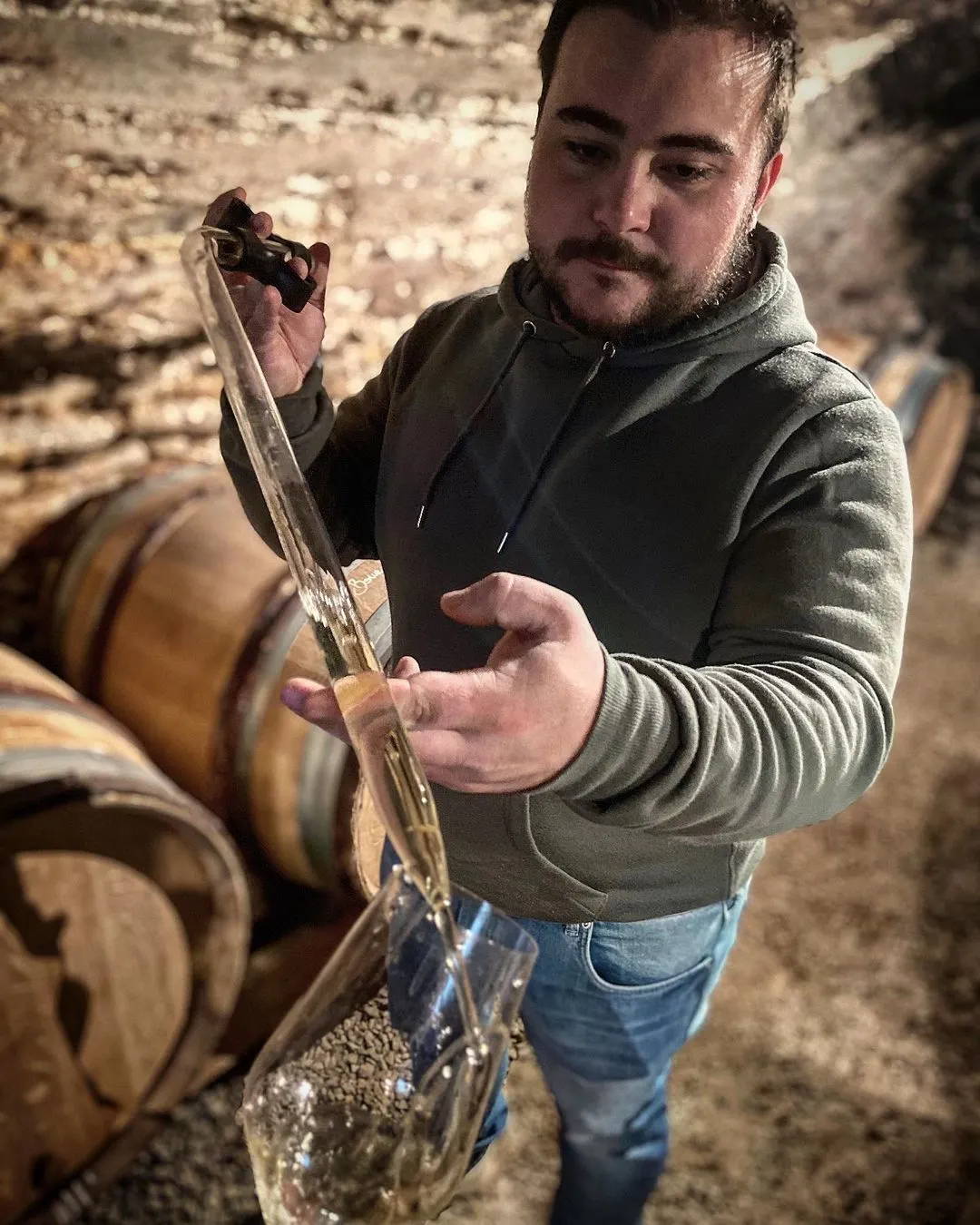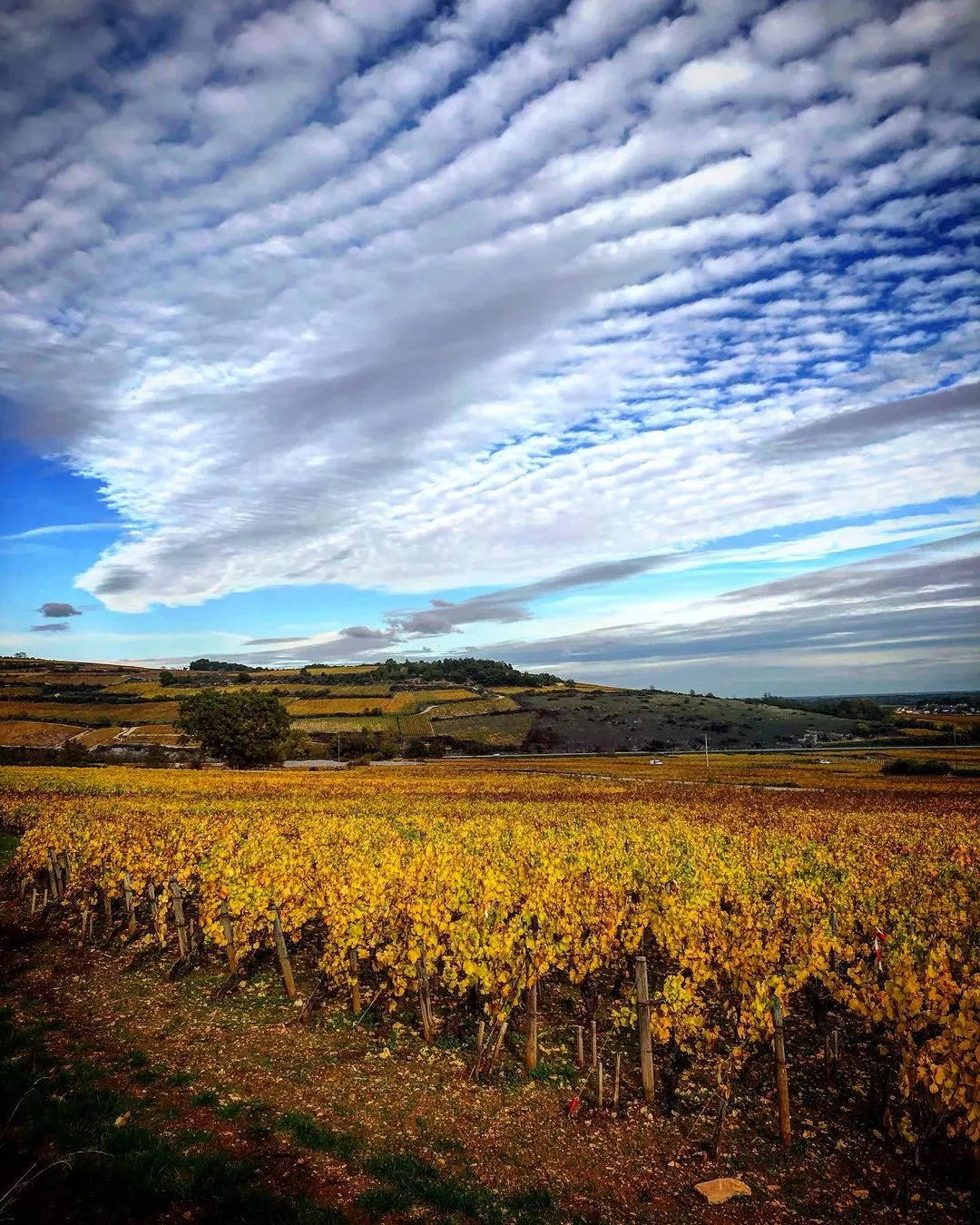SIMON COLIN
Simon Colin
Simon Colin comes from a very well-known winemaker’s family in Burgundy, particularly in Côte de Beaune. He has established his own cellar as a natural extension of his familys’ winemaking tradition. The roots of Simon’s current domaine come from Domaine Michel Colin-Deleger, one of the most talented winemakers in Chassagne-Montrachet in the 90s. In 2003 the family estate was divided into histwo sons: Philippe (father of Simon) and Bruno, both creating their own label (under their respective name).
After graduating from business school, Simon didn’t rely solely on his family’s legacy to establish himself. Instead, he worked alongside his father for three years in Burgundy and at Philippe’s South African estate in Franschhoek (“Topiary”) and gained valuable experience in his uncle Bruno’s vineyards. To broadenhis knowledge beyond the family business, he worked at Domaine Etienne Sauzet,a prestigious estate in Puligny-Montrachet, where he gained valuable experiencein a detailed biodynamic approach to winemaking.


Simon Colin comes from a very well-known winemaker’s family in Burgundy, particularly in Côte de Beaune. He has established his own cellar as a natural extension of his familys’ winemaking tradition. The roots of Simon’s current domaine come from Domaine Michel Colin-Deleger, one of the most talented winemakers in Chassagne-Montrachet in the 90s. In 2003 the family estate was divided into histwo sons: Philippe (father of Simon) and Bruno, both creating their own label (under their respective name).
After graduating from business school, Simon didn’t rely solely on his family’s legacy to establish himself. Instead, he worked alongside his father for three years in Burgundy and at Philippe’s South African estate in Franschhoek (“Topiary”) and gained valuable experience in his uncle Bruno’s vineyards. To broadenhis knowledge beyond the family business, he worked at Domaine Etienne Sauzet,a prestigious estate in Puligny-Montrachet, where he gained valuable experiencein a detailed biodynamic approach to winemaking.

Full of talent and passion, Simon launched a micro-negociant venture under his own name at the of 24-year-old. His main goal was to establish his own label and laboratory to experiment with a range of winemaking techniques, including lees, oak, and sulfur management during wine aging. To apply his experimental approach to winemaking, he sourced high-quality grapes from Chassagne Montrachet, Puligny Montrachet, and Rully and crafted a great range of regional, village, and 1ers crus wines.
Through his first own wines and despite his young age, Simon demonstrated his ability to forge his own path and create wines that reflect his own unique style and vision, rather than following in his father’s footsteps. As a result, Simon and his father made the decision to split the family estate in two rather than working together.
In 2021, Simon took over 9.3 ha of vineyard from his father, mostly on Chassagne-Montrachet with some superb plots including 1er cru Vergers, 1er cru Morgeot. Convinced of the benefits of organic and biodynamic farming, Simon immediately began converting his vineyard to organic viticulture, with certification expected with vintage 2024, and applying some biodynamic methods when climatic conditions allow it.

Full of talent and passion, Simon launched a micro-negociant venture under his own name at the of 24-year-old. His main goal was to establish his own label and laboratory to experiment with a range of winemaking techniques, including lees, oak, and sulfur management during wine aging. To apply his experimental approach to winemaking, he sourced high-quality grapes from Chassagne Montrachet, Puligny Montrachet, and Rully and crafted a great range of regional, village, and 1ers crus wines.
Through his first own wines and despite his young age, Simon demonstrated his ability to forge his own path and create wines that reflect his own unique style and vision, rather than following in his father’s footsteps. As a result, Simon and his father made the decision to split the family estate in two rather than working together.
In 2021, Simon took over 9.3 ha of vineyard from his father, mostly on Chassagne-Montrachet with some superb plots including 1er cru Vergers, 1er cru Morgeot. Convinced of the benefits of organic and biodynamic farming, Simon immediately began converting his vineyard to organic viticulture, with certification expected with vintage 2024, and applying some biodynamic methods when climatic conditions allow it.
In the cellar, he continues to experiment and adapt his approach to create his ownunique style. Despite the challenges of the 2021 vintage, the wines are already showing very well, demonstrating a great deal of complexity and depth. The level of sulfur is minimally low, as well as the level of lees during aging, with Simon keeping only the fines lees. The type of containers used are well-diversified, from the traditional 228-liter barrel to larger 350-liter vessel and even a fewconcrete eggs. The style of wine is based on a bright minerality, subtle reduction, and a minimal oak influence, leaving a pure and fresh core of stone fruits for the whites.
Simon also advocates for the historical and emblematic presence of Pinot Noir in Chassagne-Montrachet, promoting his preservation. He therefore places a high emphasison his reds wine, crafting a refined Chassagne-Montrachet village (from oldvines) and a structured 1er Cru Morgeot, both made with a bit of whole cluster(~25%).
Both wines already display impressive balance and harmony, and we are excited to start importing them in Singapore.
With such a promising start, Simon's future is undoubtedly bright!


In the cellar, he continues to experiment and adapt his approach to create his ownunique style. Despite the challenges of the 2021 vintage, the wines are already showing very well, demonstrating a great deal of complexity and depth. The level of sulfur is minimally low, as well as the level of lees during aging, with Simon keeping only the fines lees. The type of containers used are well-diversified, from the traditional 228-liter barrel to larger 350-liter vessel and even a fewconcrete eggs. The style of wine is based on a bright minerality, subtle reduction, and a minimal oak influence, leaving a pure and fresh core of stone fruits for the whites.
Simon also advocates for the historical and emblematic presence of Pinot Noir in Chassagne-Montrachet, promoting his preservation. He therefore places a high emphasison his reds wine, crafting a refined Chassagne-Montrachet village (from oldvines) and a structured 1er Cru Morgeot, both made with a bit of whole cluster(~25%).
Both wines already display impressive balance and harmony, and we are excited to start importing them in Singapore.
With such a promising start, Simon's future is undoubtedly bright!
REGION OF PRODUCTION
Burgundy - France
APPELLATION
Chassagne-Montrachet
FOUNDED
2007
VINEYARD
9.3 hectares
CLIMATE
Continental climate
SOIL COMPOSITION
Clay & Limestone
VARIETIES GROWN
Pinot Noir, Chardonnay
AGRICULTURE
Organic































